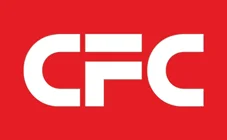- 注册
- 2002-10-07
- 消息
- 402,352
- 荣誉分数
- 76
- 声望点数
- 0
The 911 emergency call service has been around so long that it’s difficult to remember a time when it wasn’t. But Dr. Justin Maloney certainly can — he was one of its first proponents in Ottawa, and, with a handful of others, fought for years to get it here.
Maloney was, and still is, an emergency doctor at The Ottawa Hospital — then the General — in the early 1980s. He was interested in improving Ottawa’s pre-hospital care, which he says wasn’t good then compared to other North American and European cities. His goal was to see a full paramedic program created in Ottawa, but he recognized that you couldn’t start one without a foundation that included quick access to the system. “If someone’s in cardiac arrest or serious illness for a long time before an ambulance arrives, even the best paramedics or cardiac surgeons aren’t going to save their life.”
He recalls an Easter dinner in 1984 with his brother, Mark, then a political aspirant. “I was grousing about this, and he said, ‘Why don’t you do something about it?’ And I turned to him and said, ‘I’m a doctor, for God’s sake; I don’t know (anything) about this. Why don’t YOU do something about it? You want to run for politics.’”
Within a week, Maloney was summoned to the hospital’s board room, where he was asked to give an impromptu talk about the issue to a roomful of politicos and other influential Ottawans his brother had assembled.
That got the ball rolling, and the Maloney brothers, along with current Canadian War Museum and Canadian Museum of History CEO Mark O’Neill — then a 21-year-old Carleton University political science student — and retired actress and radio host Geri Migicovsky, formed the group Action 911 — and later Action Paramedic.
One of their biggest difficulties was getting people to understand that there was even a problem that needed solving. “I did a survey at the Ottawa General one week, asking people ‘If you had to call for an emergency right now, would you know what number to call?’ and fewer than five per cent of people knew who to call.”
The group faced numerous obstacles, from pre-amalgamation duplicate addresses to pushback from area politicians. “Regional chair Andy Haydon wanted to approach Bell Canada about putting a red button on phones that would be an emergency button. But everybody else in the world had 911 and we didn’t, and this just wasn’t going to fly very far.”
Eventually, not only did the 911 service pave the way for a paramedic program, Maloney says, it also led to an expansion of public CPR programs and defibrillators, the latter initially in the region’s 44 fire stations, and now in other public places including recreation centres.
“It was important then to build us up to the modern city that we are and have evolved into,” says Maloney. “It was important then, and it’s important now.”
bdeachman@postmedia.com
查看原文...
Maloney was, and still is, an emergency doctor at The Ottawa Hospital — then the General — in the early 1980s. He was interested in improving Ottawa’s pre-hospital care, which he says wasn’t good then compared to other North American and European cities. His goal was to see a full paramedic program created in Ottawa, but he recognized that you couldn’t start one without a foundation that included quick access to the system. “If someone’s in cardiac arrest or serious illness for a long time before an ambulance arrives, even the best paramedics or cardiac surgeons aren’t going to save their life.”
He recalls an Easter dinner in 1984 with his brother, Mark, then a political aspirant. “I was grousing about this, and he said, ‘Why don’t you do something about it?’ And I turned to him and said, ‘I’m a doctor, for God’s sake; I don’t know (anything) about this. Why don’t YOU do something about it? You want to run for politics.’”
Within a week, Maloney was summoned to the hospital’s board room, where he was asked to give an impromptu talk about the issue to a roomful of politicos and other influential Ottawans his brother had assembled.
That got the ball rolling, and the Maloney brothers, along with current Canadian War Museum and Canadian Museum of History CEO Mark O’Neill — then a 21-year-old Carleton University political science student — and retired actress and radio host Geri Migicovsky, formed the group Action 911 — and later Action Paramedic.
One of their biggest difficulties was getting people to understand that there was even a problem that needed solving. “I did a survey at the Ottawa General one week, asking people ‘If you had to call for an emergency right now, would you know what number to call?’ and fewer than five per cent of people knew who to call.”
The group faced numerous obstacles, from pre-amalgamation duplicate addresses to pushback from area politicians. “Regional chair Andy Haydon wanted to approach Bell Canada about putting a red button on phones that would be an emergency button. But everybody else in the world had 911 and we didn’t, and this just wasn’t going to fly very far.”
Eventually, not only did the 911 service pave the way for a paramedic program, Maloney says, it also led to an expansion of public CPR programs and defibrillators, the latter initially in the region’s 44 fire stations, and now in other public places including recreation centres.
“It was important then to build us up to the modern city that we are and have evolved into,” says Maloney. “It was important then, and it’s important now.”
bdeachman@postmedia.com
查看原文...
